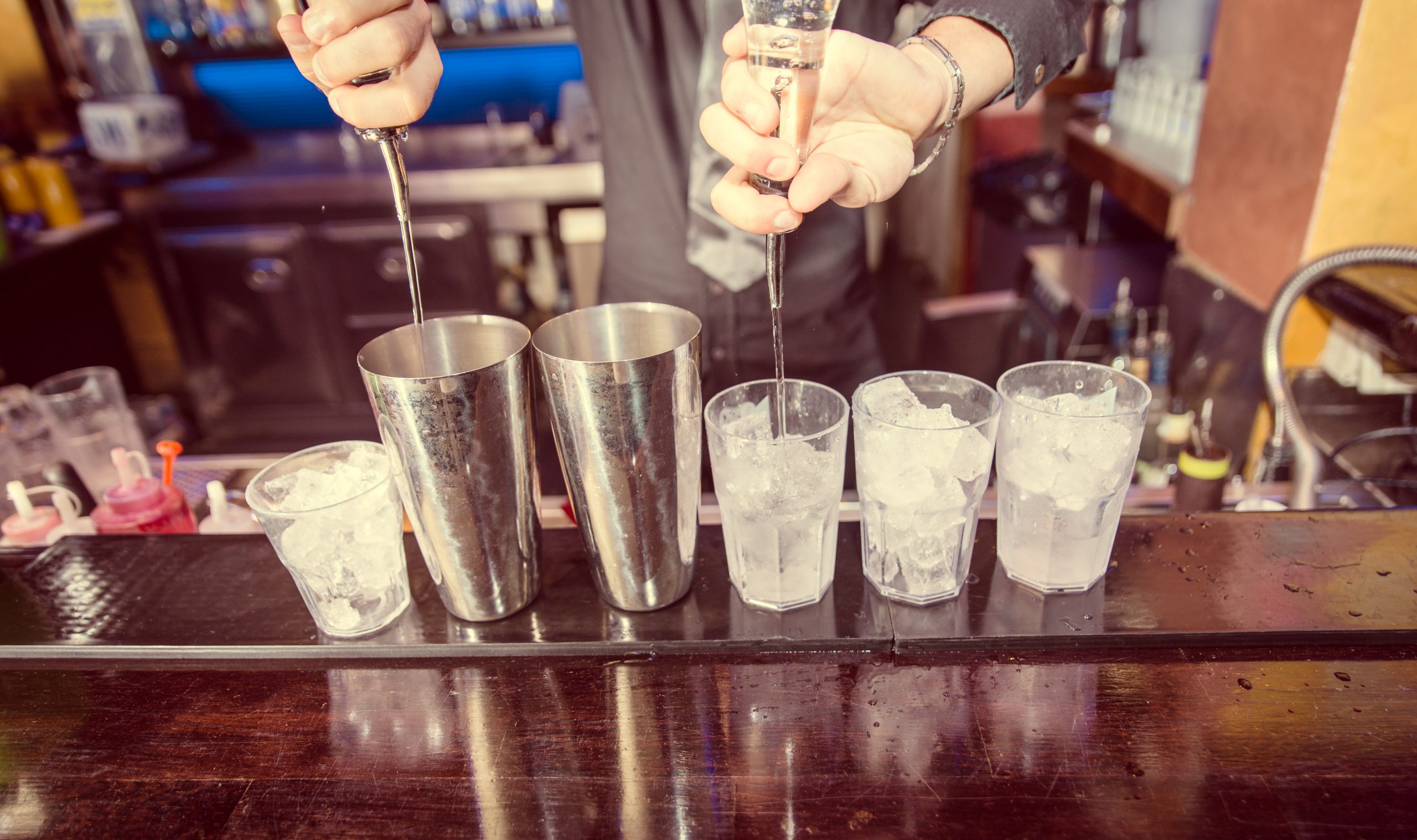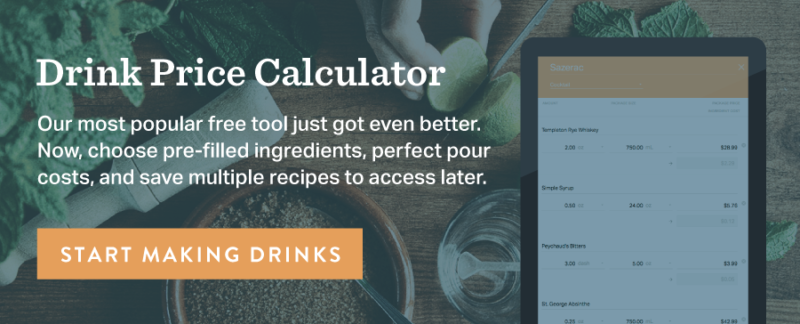


Controlling your expenses is essential if you want to run a profitable bar. If you blindly price your drinks, lose track of sitting inventory, make inaccurate estimates of how much product to order, fail to create and enforce pour policies, or make other managerial mistakes, your costs will rise, and your profits will plummet.
As a bar manager, this may seem discouraging. But, by making some simple changes, you can effectively control your liquor costs and run a successful establishment. Here are 11 proven tips for lowering your beverage costs.
Start Your Free Trial With Bevspot Today!
Pars represent the minimum amount of product a bar wants to keep in stock at all times. Accurate par setting ensures you’re not purchasing excess product or sitting on too much inventory. It can also immediately tell you when a certain item needs to be reordered. Due to seasonality and changing customer preferences, pars should be updated at least twice a year. For more accuracy, you should consider updating them quarterly, or even monthly.
In the bar business, the majority of your revenue (usually about 80%) comes from drink sales. When you price your drinks, think about competition and profitability. If your drinks are too expensive, you’ll drive away customers. If your drinks are too cheap, you’ll go out of business.
To price drinks, calculate your current beverage cost and compare it to the industry standard of 25-30%. Is your average beverage cost close to this number? Keep in mind, your establishment will likely see a variation in beverage cost across products, due to your location, client base, and client preference. You should also consider factoring in variance (lost product or shrinkage) into your pricing in order to have a cushion. With industry average shrinkage rates at 25-30%, you should really aim to bring your beverage costs to an average of 16.67%.

Overpouring is a quick way to drive up your beverage costs. If your bartenders are frequently topping off customers’ drinks with extra product, you’re giving product away for free. In order to prevent overpouring, establish a set pour policy. Owners and managers have long argued over which method is better—using jiggers or free pouring. Regardless of what method you choose, make sure you have an ongoing training and review process to ensure your staff is pouring accurately.
If you’d rather eliminate the guesswork, require your staff to use jiggers. Not only will this make your cocktails consistent, it will ensure bartenders aren’t overpouring and driving up your costs. If you’d rather have your staff use the free-pour method, make sure to teach them the proper techniques and perform routine checks to assess their accuracy. Another way to limit the possibility of overpouring is requiring the use of precision pour spouts. These specialized three-ball spouts are designed to pour a specific amount. In the U.S., they’re available in twelve different shot sizes.
Spills and comped drinks increase your beverage costs. Generally, you can’t prevent these events from happening. Drinks will inevitably spill, and staff members will give the occasional free drink to loyal customers.
Instead of letting these acts go unrecorded, take note of spills to keep track of what percentage of product loss it attributes. This will also allow for future training opportunities. Likewise, keep a log of complementary drinks, or require staff to note them in the POS. To control your costs, give each staff member a limit of how many drinks he or she can comp, and keep track of the total amount spent on free drinks each month. This way, you can see when your free drink spend is getting too high and take steps to reduce it.
Your inventory is your largest asset. It represents an investment of your business’s cash, and it can’t be used for other outflow purposes. If you’re buying things without keeping track, you’re not going to have a very good understanding of where your inventory dollars are going.
Remember, every dollar you spend on inventory is a dollar you can’t put towards other costs. You need to keep track of how much and what variety of product you have, so you don’t overstock or understock your shelves, and you do purchase product that sells.
Taking inventory will also help inform you of product loss so you can take steps to stop the problem from reoccurring. For example, if, after counting, you realize you’re missing an entire bottle of Grey Goose, you can take action to see what may have happened and prevent a loss like this from happening in the future.
In order to protect both people and assets, such as product, consider installing security cameras. People, both customers and staff, are less likely to steal product if they see a camera is watching. Security cameras will also provide you with insight, which will allow you to quickly terminate staff members who are caught stealing so you won’t continue to lose product. They’ll also help you discover weak spots in your bar’s security, such as areas of the bar that are prone to customer theft.
As mentioned before, inventory is your largest asset. It represents a huge investment of your establishment’s cash and, therefore, needs to be protected. Glass bottles—particularly ones containing wine or liquor—can be stolen, broken, and spilled. This method might be a little extreme, but in order to limit the amount of risk, some bar managers lock up storage rooms hosting the bulk of their product. By providing only managers with the key, you’ll be able to keep tabs on who has access to your product, thus reducing the possibility of product loss.
An out-of-balance draft system can sometimes create too much foam or too little foam. If there’s excess foam, you’ll have to pour a good amount of beer down the drain. If there’s not enough foam, too much beer is poured into the glass. Either way, it’s a waste and a loss of profit.
Faulty or dirty draft lines can also make beer cloudy, moldy, and off-tasting. This can be very off-putting for customers and, in rare cases, it can even cause them to be ill. Either way, serving a customer a tainted beer will cost you. You’ll have to appease your customers with a free drink replacement, you may lose repeat business from them, and, in the worst case, they’ll tell others about their negative experience and significantly cut into your business. In order to keep your costs down, make sure you invest in a quality draft system and take the steps to properly maintain it.
If you know you’re going to use product in two to three weeks, order it in bulk. Distributors want to sell more, and they don’t want to break up cases. To incentivize you to order more product, they offer buy-in-bulk deals and specials. In most cases, buying in bulk is the best way to keep your costs down. The less you pay for your product, the lower your beverage cost percentage will be. However, when it comes to more expensive products that don’t fly off the shelves, buying in bulk might not be the best option because it can tie up your costs.
Whenever you receive a delivery, comb through the invoice while the delivery person is still present. It’s important to make sure you’ve received all of the product you ordered. It’s also important to check that you didn’t receive extra product you didn’t order.
You don’t want to pay for products that weren’t delivered. If you sign the invoice without checking the delivery, you might be charged for missing products. If you review the delivery and realize there is a product missing, make a note on the invoice that it wasn’t received.
In the same sense, you don’t want to pay for products you didn’t order and don’t necessarily need. Having extra product on your shelves can tie up your costs, leaving you with less cash flow to put toward other expenses like payroll and rent.
When you hire your staff, don’t hire just anyone. Your staff runs your day-to-day operations, and they’re surrounded by breakable, spillable, stealable products. In fact, according to loss prevention professionals and operations managers, 20-25% of your losses are due to employee negligence, manipulation, errors, and indifference to policy and procedure. This loss can significantly jack up your beverage costs. Your employees are also the face of your business. If they’re not cordial and they don’t treat your customers with respect, you’ll likely lose business pretty quickly.
Although some product loss is inevitable, you can combat this cost by making sure your hiring process is thorough. If you currently have some trustworthy employees, ask them to make referrals. The referral system is the most cost-effective way to hire new employees. It’s also a faster way to hire, it generally leads to better hires, and it lowers the turnover rate of your establishment. Once you have applicants, have multiple people interview them to see if they have technical ability, but most importantly to make sure they have the personal characteristics of outstanding service providers—extroversion, agreeableness, conscientiousness, respect, and emotional stability.
As a manager, there are plenty of different things to think about when working to keep costs down. Follow these tips to lower your beverage costs and improve your bottom line.
Looking for more help behind the bar? Schedule a call with one of our product specialists to see how BevSpot’s bar management software can help you lower your beverage costs!
Start a FREE Trial Today! BevSpot offers full product education and account setup for all customers! No card Information needed!
